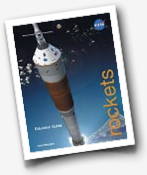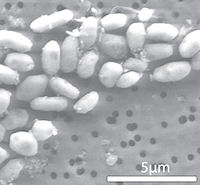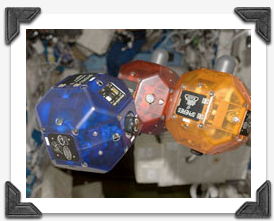NASA will hold a news conference at 2 p.m. EST on Thursday, Dec. 2, to discuss an astrobiology finding that will impact the search for evidence of extraterrestrial life. Astrobiology is the study of the origin, evolution, distribution and future of life in the universe.
The news conference will be broadcast live on NASA Television and streamed on the agency’s website at https://www.nasa.gov/ntv.
Participants are:
– Mary Voytek, director, Astrobiology Program, NASA Headquarters, Washington
– Felisa Wolfe-Simon, NASA astrobiology research fellow, U.S. Geological Survey, Menlo Park, Calif.
– Pamela Conrad, astrobiologist, NASA’s Goddard Space Flight Center, Greenbelt, Md.
– Steven Benner, distinguished fellow, Foundation for Applied Molecular Evolution, Gainesville, Fla.
Participants are:
– Mary Voytek, director, Astrobiology Program, NASA Headquarters, Washington
– Felisa Wolfe-Simon, NASA astrobiology research fellow, U.S. Geological Survey, Menlo Park, Calif.
– Pamela Conrad, astrobiologist, NASA’s Goddard Space Flight Center, Greenbelt, Md.
– Steven Benner, distinguished fellow, Foundation for Applied Molecular Evolution, Gainesville, Fla.
– James Elser, professor, Arizona State University, Tempe
 Carrie’s, four inclusion classes must complete a class science fair project. This allows her to guide the students through the scientific method. This year their science fair project dealt with rockets, with the NASA Rockets Guide on the NES Virtual Campus as a resource. Students watched NASA videos as part of their research and then conducted an investigation to see how the amount of thrust affects the distance a rocket travels.
Carrie’s, four inclusion classes must complete a class science fair project. This allows her to guide the students through the scientific method. This year their science fair project dealt with rockets, with the NASA Rockets Guide on the NES Virtual Campus as a resource. Students watched NASA videos as part of their research and then conducted an investigation to see how the amount of thrust affects the distance a rocket travels. Carrie’s, four inclusion classes must complete a class science fair project. This allows her to guide the students through the scientific method. This year their science fair project dealt with rockets, with the NASA Rockets Guide on the NES Virtual Campus as a resource. Students watched NASA videos as part of their research and then conducted an investigation to see how the amount of thrust affects the distance a rocket travels.
Carrie’s, four inclusion classes must complete a class science fair project. This allows her to guide the students through the scientific method. This year their science fair project dealt with rockets, with the NASA Rockets Guide on the NES Virtual Campus as a resource. Students watched NASA videos as part of their research and then conducted an investigation to see how the amount of thrust affects the distance a rocket travels.
 During this week’s NASA Now program, you’ll meet Michael Studinger, Project Scientist for Operation IceBridge. He’ll describe the purpose of the IceBridge campaign and how the campaign objectives will be met. He also explains why studying Earth’s ice is important for understanding climate changes and how they related to humans.
During this week’s NASA Now program, you’ll meet Michael Studinger, Project Scientist for Operation IceBridge. He’ll describe the purpose of the IceBridge campaign and how the campaign objectives will be met. He also explains why studying Earth’s ice is important for understanding climate changes and how they related to humans. Check out part 2 of the NASA Now: A-Train series and learn how NASA uses a constellation of satellites called the A-Train to monitor the Earth system. Five NASA satellites comprise the A-Train. They fly over the same location on Earth within 15 minutes of each other collecting data about the current state of the components of the Earth system.
Check out part 2 of the NASA Now: A-Train series and learn how NASA uses a constellation of satellites called the A-Train to monitor the Earth system. Five NASA satellites comprise the A-Train. They fly over the same location on Earth within 15 minutes of each other collecting data about the current state of the components of the Earth system. Headquarters in Washington. “As we pursue our efforts to seek signs of life in the solar system, we have to think more broadly, more diversely and consider life as we do not know it.”
Headquarters in Washington. “As we pursue our efforts to seek signs of life in the solar system, we have to think more broadly, more diversely and consider life as we do not know it.” Each day a different image or photograph of our fascinating universe is featured, along with a brief explanation written by a professional astronomer.
Each day a different image or photograph of our fascinating universe is featured, along with a brief explanation written by a professional astronomer. Two suitcases, called Passive Experiment Containers, containing 3 million basil seeds were attached to the outside of the International Space Station during a spacewalk. The suitcases were left there for one year as part of the MISSE, or Materials International Space Station Experiment. One PEC was attached to one of the high-pressure tanks around the Crew Lock and the other was located on the outboard end of the Quest Joint Airlock.
Two suitcases, called Passive Experiment Containers, containing 3 million basil seeds were attached to the outside of the International Space Station during a spacewalk. The suitcases were left there for one year as part of the MISSE, or Materials International Space Station Experiment. One PEC was attached to one of the high-pressure tanks around the Crew Lock and the other was located on the outboard end of the Quest Joint Airlock. You won’t find any light sabers on the International Space Station, but you will find a trio of “droids” that look a lot like what any self-respecting science fiction fan remembers as a Star Wars “remote.”
That’s the tricky little device that Luke Skywalker used to hone his light-saber skills before he went up against Darth Vader and the rest of the Evil Empire.
But instead of being used for light-saber practice, the droids on the space station are being used to test automated rendezvous and formation flying in microgravity. And soon, there may be a host of other things the droids will be used to test, as their capabilities and uses are expanded and made available for National Laboratory and other uses.
You won’t find any light sabers on the International Space Station, but you will find a trio of “droids” that look a lot like what any self-respecting science fiction fan remembers as a Star Wars “remote.”
That’s the tricky little device that Luke Skywalker used to hone his light-saber skills before he went up against Darth Vader and the rest of the Evil Empire.
But instead of being used for light-saber practice, the droids on the space station are being used to test automated rendezvous and formation flying in microgravity. And soon, there may be a host of other things the droids will be used to test, as their capabilities and uses are expanded and made available for National Laboratory and other uses. During this episode of NASA Now, you’ll meet NASA physical scientist Lin Chambers, learn about the role of clouds in the Earth’s energy and water cycles, and find out how NASA collects cloud data. Understanding the impact of clouds is an important key to predicting how Earth’s climate may change in the future. Currently, five Earth observing satellites, known as the “A-Train” orbit the Earth. These satellites orbit in formation, following each other and barrel across the equator at about 1:30 p.m. local time each day. This behavior gives the constellation of satellites its name: The “A” stands for afternoon. By combining different sets of nearly simultaneous observations from these satellites, scientists are able to study important parameters related to climate.
During this episode of NASA Now, you’ll meet NASA physical scientist Lin Chambers, learn about the role of clouds in the Earth’s energy and water cycles, and find out how NASA collects cloud data. Understanding the impact of clouds is an important key to predicting how Earth’s climate may change in the future. Currently, five Earth observing satellites, known as the “A-Train” orbit the Earth. These satellites orbit in formation, following each other and barrel across the equator at about 1:30 p.m. local time each day. This behavior gives the constellation of satellites its name: The “A” stands for afternoon. By combining different sets of nearly simultaneous observations from these satellites, scientists are able to study important parameters related to climate.